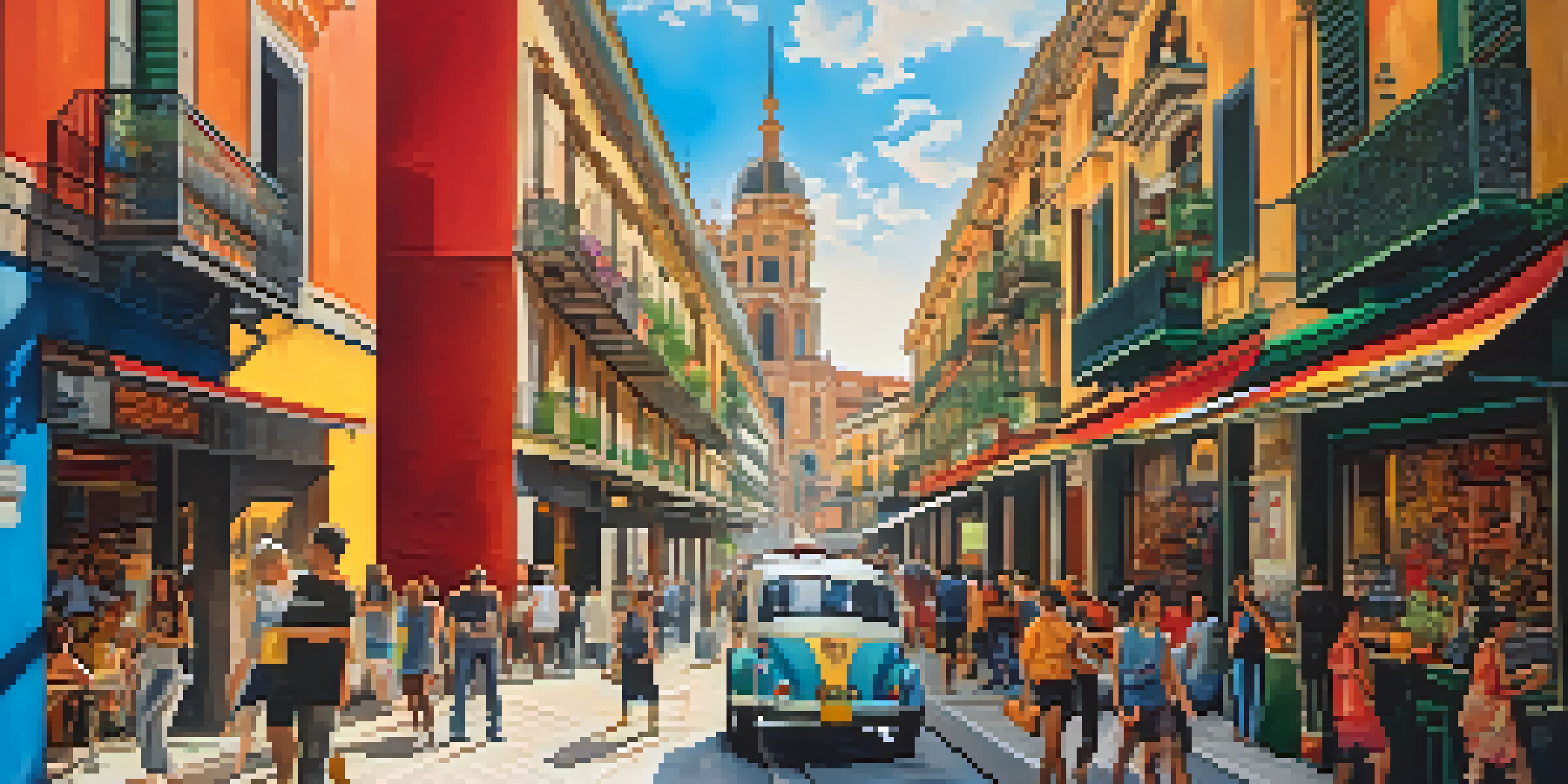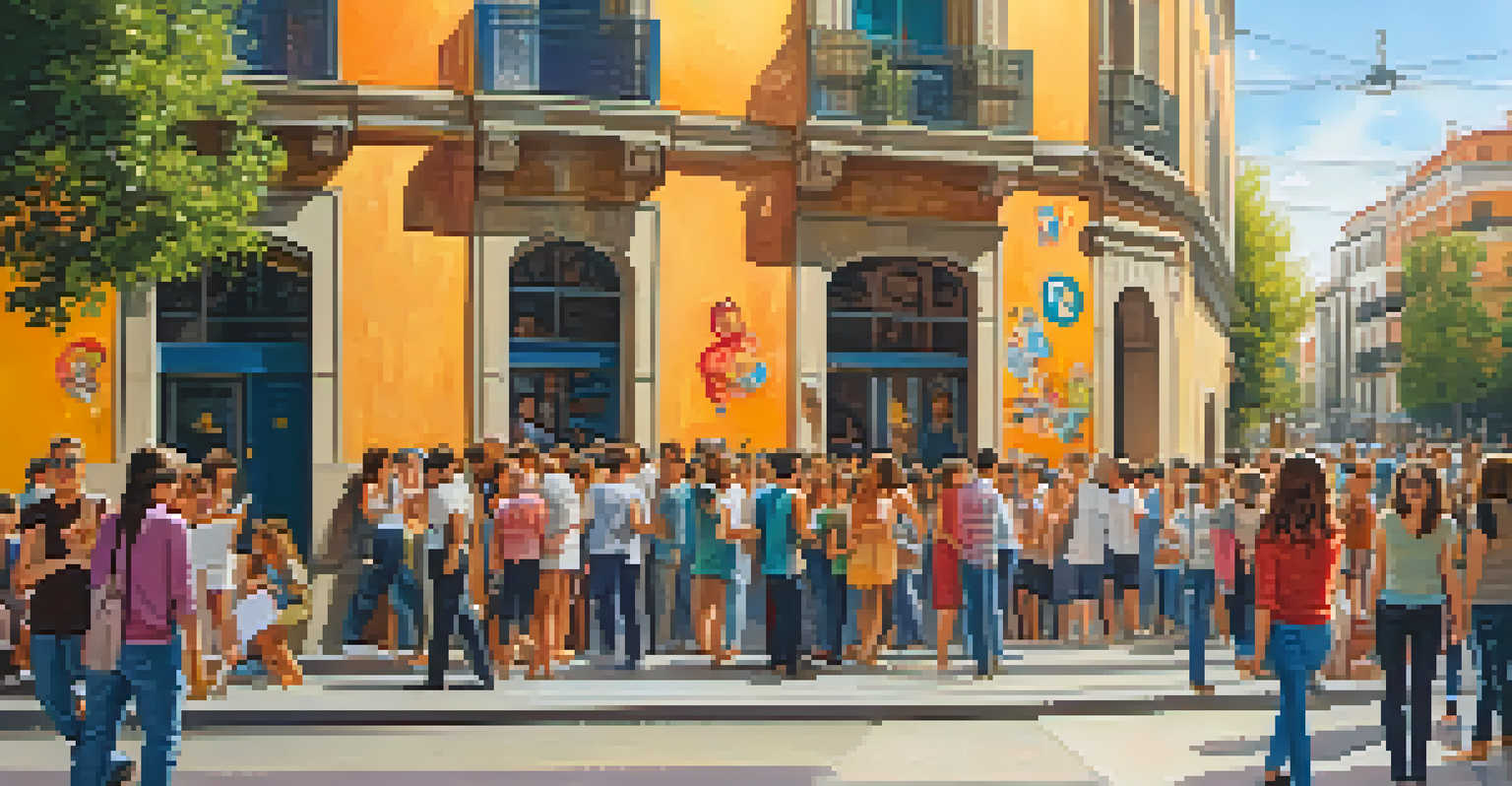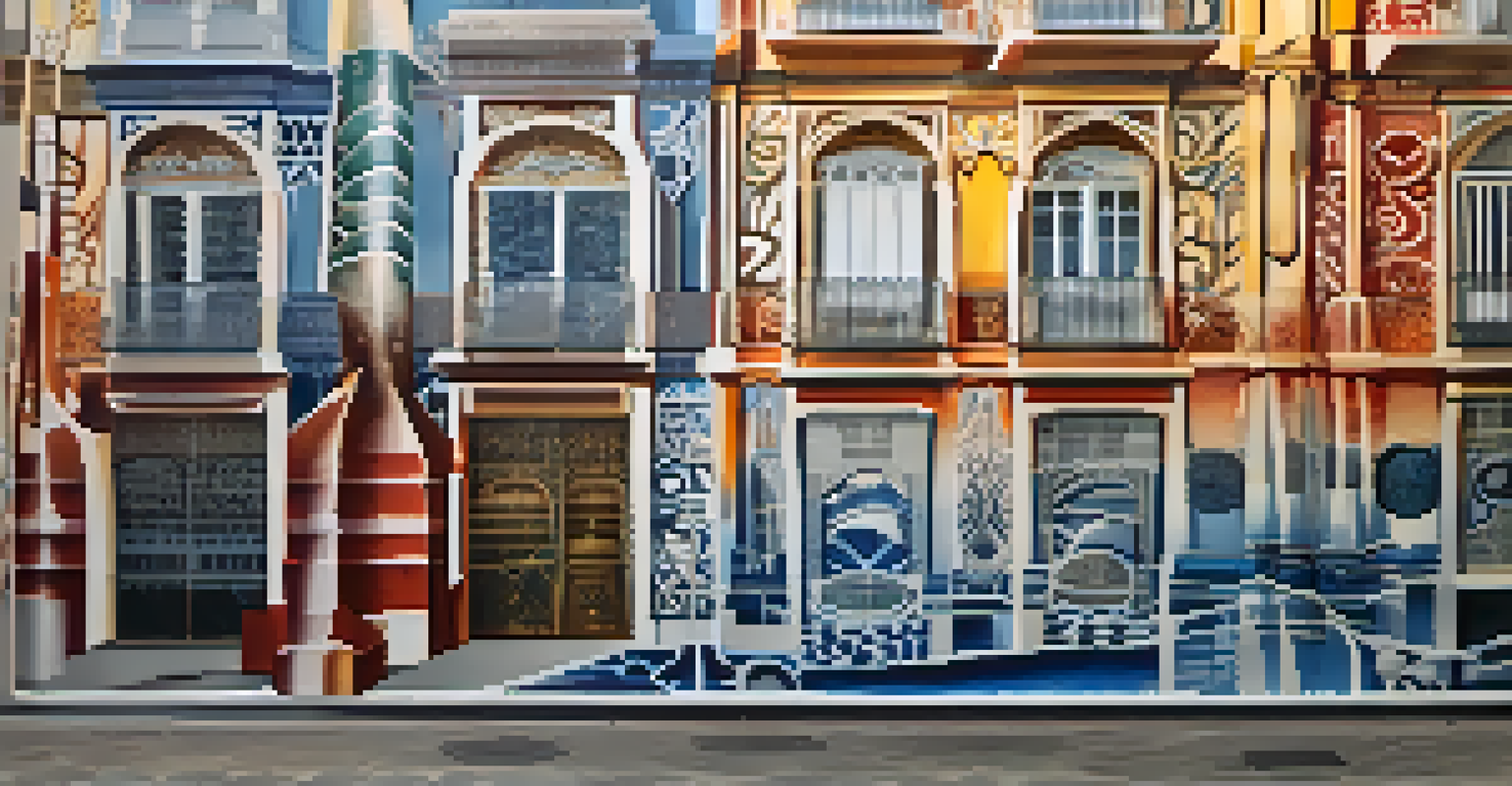Madrid's Street Art: A Blend of Tradition and Modernity

The Historical Roots of Madrid's Street Art
Madrid's street art scene is not just a contemporary phenomenon; it has deep historical roots. The city's walls have long been canvases for expression, dating back to the days when political messages and social commentary were painted in public spaces. These early expressions laid the groundwork for the vibrant murals we see today.
Art is the most beautiful of all lies.
As you walk through neighborhoods like Lavapiés or Malasaña, you'll notice how the past and present intertwine. Artists often draw inspiration from Madrid’s rich cultural history, incorporating elements from traditional Spanish art and architecture into their work. This connection to history gives the street art a unique depth that resonates with both locals and visitors.
This historical background showcases street art as a form of storytelling, capturing the essence of Madrid's evolving identity. Each mural becomes a piece of the city's narrative, reflecting not just artistic talent but also the cultural shifts that have shaped Madrid over the years.
Modern Influences Shaping Street Art
Today's street art in Madrid is influenced by a myriad of modern styles and global trends. Artists from various backgrounds bring their unique perspectives, blending techniques from graffiti, pop art, and even digital art. This fusion captures the dynamic spirit of the city and its ever-changing landscape.

For instance, the use of bright colors and bold designs can be traced back to pop culture influences, while intricate stencils and detailed illustrations reflect a more contemporary artistic approach. This blend of styles not only adds vibrancy to the streets but also makes each artwork a conversation starter.
Street Art Reflects Madrid's History
Madrid's street art serves as a narrative of the city's evolving identity, intertwining historical influences with contemporary expression.
Moreover, the accessibility of social media has allowed artists to share their work with a global audience, further enriching the local scene. Platforms like Instagram have become essential tools for promoting street art, allowing creators to connect with fans and other artists worldwide.
Iconic Street Art Locations in Madrid
Madrid is home to several iconic locations that showcase its vibrant street art scene. Areas like Lavapiés and Malasaña are often cited as the heart of street art, where walls transform into galleries filled with murals that tell stories. These neighborhoods invite both locals and tourists to explore and appreciate the creativity that adorns their streets.
The painter tries to master the whole of the world, but the muralist is a servant of the community.
In Lavapiés, for example, you can find striking pieces that address social issues, reflecting the community's diverse character. Meanwhile, Malasaña's walls often feature playful and whimsical art, appealing to a younger crowd looking for a unique urban experience. Each corner of these neighborhoods offers a new visual surprise.
Additionally, events like the Madrid Street Art Project further enhance the city’s artistic landscape by inviting renowned artists to create large-scale murals. These projects not only beautify the urban environment but also foster a sense of pride and ownership among residents.
The Role of Community in Street Art
Community plays a crucial role in the development and appreciation of street art in Madrid. Local residents often participate in the creation and maintenance of murals, ensuring that the art reflects their culture and values. This collaborative spirit fosters a sense of belonging and pride among community members.
Moreover, grassroots initiatives and workshops encourage budding artists to express themselves and contribute to the local art scene. These programs often emphasize the importance of art as a means of communication, enabling individuals to voice their thoughts on social and political issues through creative outlets.
Community Shapes Street Art Culture
Local residents actively engage in the creation and preservation of murals, fostering a sense of belonging and cultural pride.
This community engagement not only brings people together but also helps in preserving the art form for future generations. By involving locals in the artistic process, Madrid's street art continues to evolve while staying rooted in the community's identity.
Street Art as a Form of Social Commentary
Much of Madrid's street art serves as a powerful form of social commentary. Artists often use their work to address pressing issues such as inequality, discrimination, and environmental concerns. These murals act as public platforms for dialogue, sparking conversations about topics that matter to the community.
For instance, you might come across a mural that highlights the plight of marginalized groups, challenging viewers to confront uncomfortable truths. Such pieces not only raise awareness but also encourage empathy and understanding among diverse audiences.
By giving voice to these important messages, street art becomes more than just decoration; it transforms into a catalyst for change. The impact of these artworks can be profound, inspiring individuals to take action and advocate for a better society.
The Intersection of Street Art and Tourism
As street art gains recognition, it has become a significant attraction for tourists visiting Madrid. Travelers often seek out the city's murals, viewing them as essential stops on their journey. This growing interest highlights the importance of street art in shaping Madrid's cultural identity.
Tour operators have even started offering guided street art tours, allowing visitors to explore the stories behind the murals. These tours provide deeper insights into the artists' intentions and the social contexts that inspire their work, enriching the overall experience for tourists.
Street Art Drives Social Dialogue
Many murals in Madrid tackle social issues, using art as a platform for important conversations and advocacy within the community.
However, this influx of tourism also raises questions about the preservation of these artworks. Balancing the appreciation of street art with the need to protect the integrity of these pieces is an ongoing discussion among local communities and artists alike.
The Future of Street Art in Madrid
The future of street art in Madrid looks bright, with emerging artists continually redefining the scene. New talents are pushing boundaries and experimenting with different mediums, ensuring that the art form remains fresh and relevant. This constant evolution is essential for keeping the city's cultural landscape vibrant.
As more artists gain recognition, there is also a growing interest in integrating street art into public spaces, such as parks and plazas. This trend not only beautifies the environment but also encourages community interaction and engagement with the artwork.

Moreover, as the conversation around social issues continues to evolve, street art will likely remain a powerful tool for advocacy and expression. The ability of art to reflect societal changes ensures that Madrid's street art will remain a compelling blend of tradition and modernity for years to come.